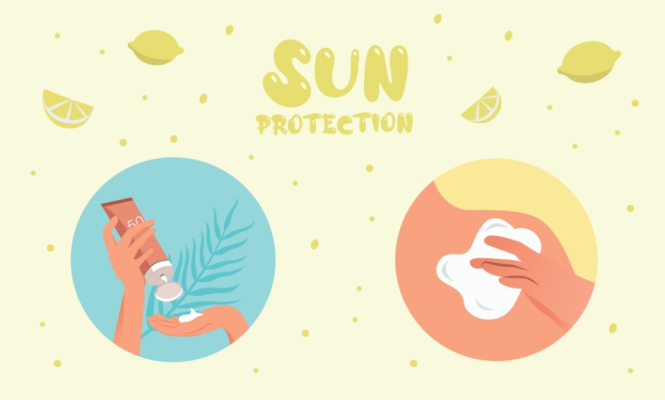general health
The Importance of Sunscreen and Skin Protection
We all know that too much sun exposure can harm our skin. Sunburn, premature aging, and an increased risk of skin cancer are just a few consequences of unprotected sun exposure. But did you know that wearing sunscreen and practicing other forms of skin protection can significantly reduce your risk of these adverse outcomes? In this article, we’ll explore the importance of sunscreen and other skin protection measures and provide tips on how to keep your skin healthy and protected.
The Dangers of Sun Exposure
Sun exposure can cause both short-term and long-term damage to your skin. In the short term, sunburn is a common consequence of overexposure to the sun. Sunburned skin can be painful, red, and swollen and may even blister in severe cases.
In the long term, sun exposure can lead to premature skin aging, including wrinkles, age spots, and sagging skin. But, perhaps most concerning, sun exposure is the primary cause of skin cancer, the most common cancer in the United States.
How Sunscreen Works
Sunscreen works by absorbing, reflecting, or scattering the sun’s harmful UV rays. Most sunscreens contain physical or chemical filters that protect the skin from UVA and UVB rays.
Physical sunscreens, such as those containing zinc oxide or titanium dioxide, form a barrier on the skin’s surface that reflects or scatters the sun’s rays. Chemical sunscreens, on the other hand, work by absorbing UV radiation and converting it into heat, which is then released from the skin.
The Power of Self-Care: How to Prioritize Yourself
Tips for Using Sunscreen
Using sunscreen is one of the most effective ways to protect your skin from the harmful effects of sun exposure. Here are some tips for using sunscreen effectively:
Choose a broad-spectrum sunscreen that protects against both UVA and UVB rays.
Use sunscreen with an SPF of at least 30.
Apply sunscreen 15-30 minutes before going outside.
Reapply sunscreen every two hours or more often if you’re sweating or swimming.
Use enough sunscreen to cover all exposed skin, including your face, neck, and ears.
Use a lip balm with SPF to apply sunscreen to your lips.
Remember that sunscreen is not a complete solution; other forms of skin protection are also necessary.
Other Forms of Skin Protection
In addition to wearing sunscreen, there are other steps you can take to protect your skin from the harmful effects of the sun:
Wear protective clothing, such as a hat and long-sleeved shirt, when outside for extended periods.
Seek shade, especially during peak sun hours between 10 am and 4 pm.
Use sunglasses to protect your eyes from UV radiation.
Avoid tanning beds, which emit UV radiation and can increase your risk of skin cancer.
Conclusion
In conclusion, protecting your skin from the harmful effects of the sun is essential for maintaining healthy, youthful-looking skin and reducing your risk of skin cancer. Sunscreen is an effective tool for protecting your skin from the sun’s harmful UV rays, but it’s important to remember that it’s not a complete solution. In addition to wearing sunscreen, seek shade, wear protective clothing, and avoid tanning beds to reduce your risk of sun damage. By taking these steps, you can enjoy time in the sun while keeping your skin healthy and protected.


